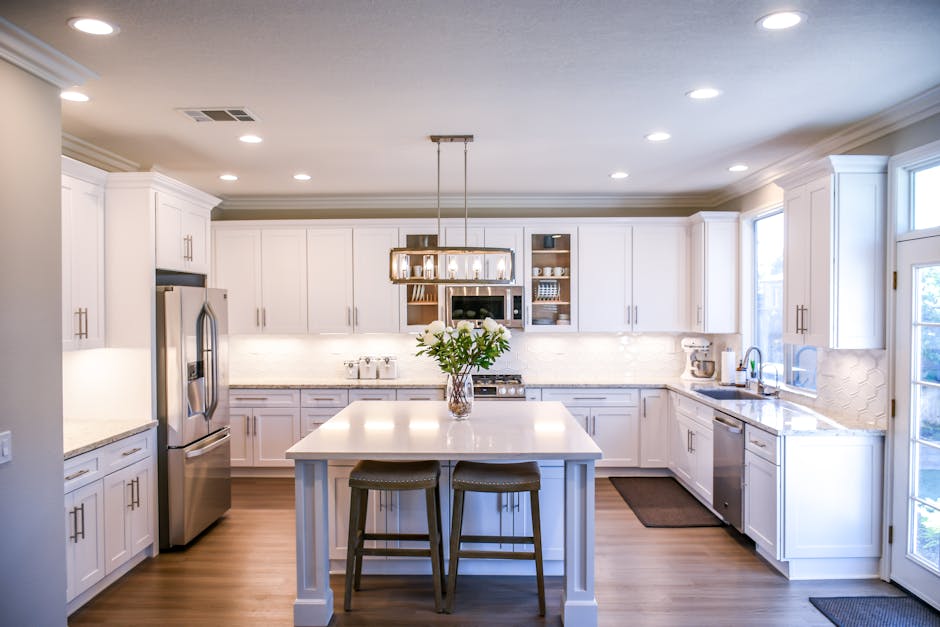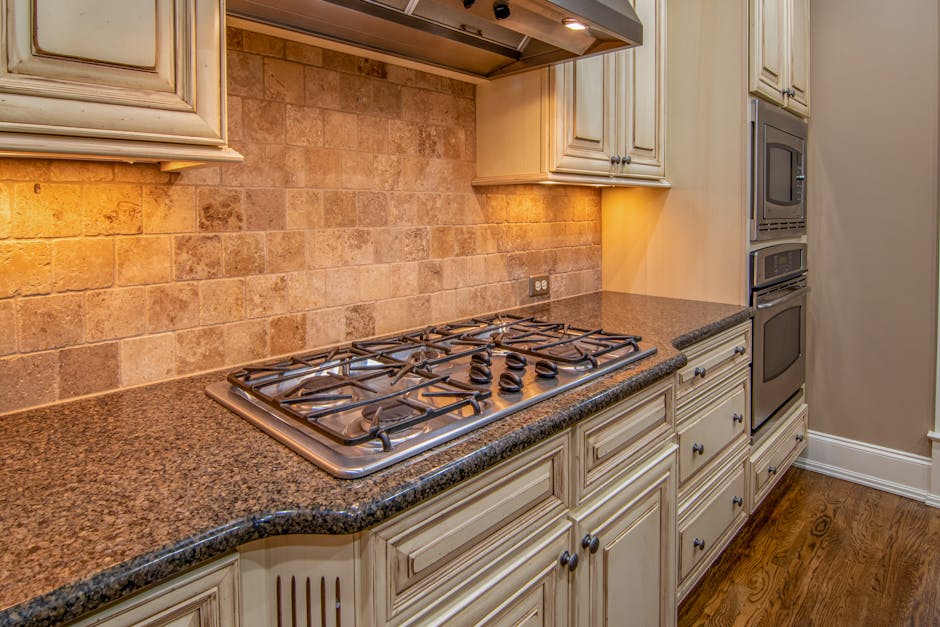Are you tired of the sticky residue that seems to accumulate on your wood kitchen cabinets? Do you find yourself constantly wiping them down, only to have the stickiness return? Well, worry no more! In this guide, we will uncover the secrets to effectively clean and restore your sticky wood kitchen cabinets to their former glory.
Wood kitchen cabinets are not only a beautiful addition to any home, but they also provide a warm and natural feel to your kitchen. However, over time, these cabinets can become sticky and grimy, making them appear dull and unappealing. This sticky residue is often caused by a buildup of grease, food particles, and other substances that cling to the wood surface. But fear not, because with the right cleaning techniques and some simple household ingredients, you can easily remove the stickiness and bring back the shine to your wood cabinets. So, let’s dive into the step-by-step process of cleaning sticky wood kitchen cabinets and reclaim the beauty of your kitchen space.
How to Clean Sticky Wood Kitchen Cabinets:
- Remove all items from the cabinets.
- Mix equal parts vinegar and water in a spray bottle.
- Spray the solution onto a microfiber cloth.
- Gently wipe the sticky areas of the cabinets.
- Rinse the cloth frequently and continue wiping until the stickiness is removed.
- Dry the cabinets with a clean, dry cloth.
- Replace the items back in the cabinets.

How to Clean Sticky Wood Kitchen Cabinets
Wooden kitchen cabinets can quickly accumulate sticky residue from cooking oils, food spills, and everyday use. Cleaning these sticky surfaces is essential to maintain the beauty and longevity of your cabinets. With a few simple steps and the right cleaning supplies, you can easily restore your wood kitchen cabinets to their original shine. Here’s a step-by-step guide to help you clean sticky wood kitchen cabinets effectively.
Step 1: Remove Items and Dust the Cabinets
Before you begin the cleaning process, remove all items from your kitchen cabinets to ensure easy access. Next, use a dry microfiber cloth or a feather duster to gently remove any dust or loose debris from the cabinet surfaces. Dusting is important as it helps prevent scratching the wood while cleaning.
Once you have dusted off the cabinets, use a vacuum cleaner with a brush attachment to clean the corners and crevices. This will ensure that all loose dirt and dust particles are completely removed.
Step 2: Prepare a Cleaning Solution
Now that your cabinets are free from dust, it’s time to prepare a suitable cleaning solution. Mix a few drops of mild dish soap or wood cleaner with warm water in a bucket or a basin. Avoid using harsh chemicals or abrasive cleaners, as they can damage the wood’s finish.
If your cabinets have stubborn sticky residue, you can add a small amount of white vinegar or baking soda to the cleaning solution. Remember to test the cleaning solution on a small, inconspicuous area of the cabinet to ensure it does not cause any discoloration or damage.
Step 3: Clean the Cabinets
Dip a soft sponge or microfiber cloth into the prepared cleaning solution and wring out any excess liquid. Gently wipe down the cabinet surfaces, paying special attention to areas with sticky residue. Wipe in the direction of the wood grain to avoid causing any scratches.
If you encounter stubborn sticky spots, apply a bit of the cleaning solution directly to the area and let it sit for a few minutes. Then, use a soft-bristled brush or an old toothbrush to scrub the sticky residue gently. Rinse the sponge or cloth frequently and continue wiping until all the sticky residue is gone.
Step 4: Rinse and Dry Thoroughly
After cleaning, rinse the cabinets with a clean damp cloth to remove any remaining cleaning solution. Make sure to remove all the soap or vinegar residue as it can leave a film on the wood surface if not properly rinsed.
Finally, use a dry microfiber cloth to thoroughly dry the cabinets. Leaving them wet for an extended period can cause water damage or warping of the wood. Ensure that all surfaces are completely dry before placing the items back into the cabinets.
Step 5: Maintain and Prevent Future Stickiness
To maintain the cleanliness and prevent future stickiness of your wood kitchen cabinets, it’s important to establish a regular cleaning routine. Wipe down the cabinets with a dry cloth or duster regularly to remove dust and prevent it from accumulating. Additionally, avoid using harsh chemicals or abrasive cleaners, as they can strip the finish and make the wood more susceptible to stickiness.
You can also apply a thin layer of furniture wax or wood polish to the cabinets every few months to help protect the wood and maintain its shine. Always follow the manufacturer’s instructions when using any cleaning or polishing products.
Summary
Cleaning sticky wood kitchen cabinets is a straightforward process that can be done with a few simple steps. By removing items, dusting, preparing a cleaning solution, and wiping down the cabinets, you can restore their original shine and maintain their beauty. Regular maintenance and preventive measures can also help prevent future stickiness and keep your wood kitchen cabinets looking their best for years to come.
Frequently Asked Questions
Here are some commonly asked questions about how to clean sticky wood kitchen cabinets:
1. How do I remove sticky residue from my wood kitchen cabinets?
To remove sticky residue from your wood kitchen cabinets, start by mixing a solution of warm water and mild dish soap. Dip a soft cloth or sponge into the solution and gently scrub the sticky areas. If the residue is stubborn, you can also try using a mixture of white vinegar and water. After cleaning, rinse the cabinets with clean water and dry them thoroughly with a soft cloth.
It’s important to avoid using harsh chemical cleaners or abrasive scrubbers, as they can damage the wood finish. If the sticky residue persists, you may need to consider refinishing or resealing your cabinets.
2. What can I use to remove grease buildup from my wood kitchen cabinets?
To remove grease buildup from your wood kitchen cabinets, start by mixing a solution of warm water and mild dish soap. Dip a soft cloth or sponge into the solution and gently scrub the greasy areas. You can also add a small amount of baking soda to the mixture for added cleaning power.
If the grease buildup is stubborn, you can try using a mixture of white vinegar and water. Vinegar has natural degreasing properties that can help break down the grease. After cleaning, rinse the cabinets with clean water and dry them thoroughly with a soft cloth.
3. How do I get rid of sticky residue without damaging the wood finish?
To remove sticky residue from your wood kitchen cabinets without damaging the wood finish, it’s important to avoid using harsh chemical cleaners or abrasive scrubbers. Instead, opt for gentle cleaning solutions such as warm water and mild dish soap.
If the sticky residue is stubborn, you can try using a mixture of white vinegar and water. Vinegar is a natural cleaning agent that can help break down the stickiness. Remember to rinse the cabinets with clean water and dry them thoroughly after cleaning.
4. Can I use oil to clean sticky wood kitchen cabinets?
While some sources may suggest using oil to clean sticky wood kitchen cabinets, it’s generally not recommended. Oil can leave a greasy residue on the cabinets, which can attract more dirt and dust over time. Additionally, certain oils can penetrate the wood and alter the appearance of the finish.
It’s best to stick to gentle cleaning solutions such as warm water and mild dish soap, or a mixture of white vinegar and water. These options are effective in removing sticky residue without causing any damage to the wood finish.
5. How often should I clean my wood kitchen cabinets?
The frequency of cleaning your wood kitchen cabinets depends on various factors, such as the amount of use and the level of dirt or grease buildup. In general, it’s a good idea to wipe down your cabinets regularly to prevent sticky residue or grease from accumulating.
Aim to clean your cabinets at least once a month, or more frequently if needed. Regular maintenance will help keep your cabinets looking their best and prolong their lifespan.

By following these steps and incorporating them into your regular cleaning routine, you can maintain the cleanliness and elegance of your wood kitchen cabinets effortlessly. Remember that prevention is key, so try to wipe up spills and splatters as soon as they happen to avoid sticky buildup in the first place. With a little care and attention, your cabinets will continue to be the centerpiece of your kitchen, providing a warm and inviting atmosphere for years to come. So roll up your sleeves, gather your cleaning supplies, and let the transformation begin!
- How to Design Wood Carving - May 7, 2024
- How to Carve Wood - May 7, 2024
- How to Remove Cat Urine From Wood Furniture - May 7, 2024